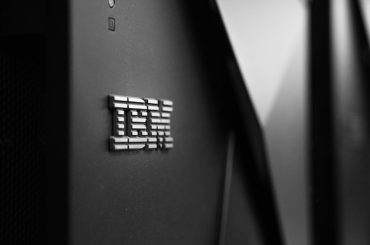Authors: Dr. Jinal Shah
Co-Author: Nandan Sanghvi
There is nothing more terrifying than an enemy who strikes without warning, vanishing like a ghost before you even know you’ve been hit. This chilling reality extends beyond the battlefield, where battles are often won not by sheer force but by the element of surprise and superior strategy. Wars have never been mere clashes of armies; they are fought in trenches and treaties, in laboratories and satellites, in technologies and intelligence. Wars never truly end, they only change form. This art of war has now led countries into a new war, the war to lead the artificial intelligence space.
The term “Artificial Intelligence” was first coined by John McCarthy in 1955, defining the practice of human-like machines. AI has evolved a lot over the years, dating back to its victory over grandmaster Garry Kasparov in 1997. Now, in the era of Generative AI, it is being used at an unprecedented pace, from driving cars and diagnosing diseases to holding human-like conversations.
To describe generative AI in simple terms, imagine Einstein as your companion; you can talk to him anytime you want, ask him anything you want, and he won’t run out of patience. He can take on any role you wish, be it a doctor, a teacher, or a scientist, and he will be an expert in that field. But Einstein, of course, has some limitations; he can make mistakes and misunderstand you, just like a human. But ‘his’ most significant restriction is ‘you’ and your ability to communicate with him effectively! AI has now blurred the line between humans and machines.
The Singularity Sprint
The launch of ChatGPT by OpenAI in November 2022 marked a meteoric rise of generative AI chatbots. ChatGPT crashed the party in the gala of artificial intelligence, where tech giants like Google, Amazon, and Microsoft have long ruled. Tech leaders were compelled to pivot overnight. The AI wave had the startups scrambling to integrate it.
OpenAI truly left companies no choice but to adapt or succumb to obsolescence. To further enhance its strategic partnership, Microsoft wasted no time and amplified the next round of funding by investing a total of $13 billion into OpenAI (CNBC). Google tried to sneak in by serving a half-baked dish, Bard, assuming nobody would notice its lackluster capabilities. Never charge into battle with a wooden sword!
The United States of America became the vanguard of the AI revolution. Though AI forced the government to draft new policies, the USA benefited significantly due to a strong research base, a large tech talent pool, and massive investments in this sector. The evolution extended beyond the tech industry into health, education, finance, consulting, etc. Major American tech companies soon started working on AI models. OpenAI began a revolution while setting a standard.
The world witnessed the launches of Gemini, Claude, Perplexity AI, and Meta AI, yet ChatGPT was in no mood to slow down. ChatGPT started producing human-like texts through “deep learning,” a subset of machine learning. Google’s Gemini aimed for multimodal reasoning and integrating text and images, whereas Perplexity revolutionized AI-assisted search. It offers citation-backed responses, challenging traditional search engines, while Claude focuses on safety and interpretability, catering to responsible AI deployment. Meta has integrated its Meta AI across social media platforms, Ray-Ban Meta smart glasses, and VR headsets.
Despite their strengths, these models largely mirrored each other in their commercial strategies, often showing similar capabilities. Their rapid iteration cycles and competitive marketing tactics were based more on branding than fundamental technological leaps.
How long before the competition breaks?
The First Shot Fired – Silicon Showdown
“In battle, caution is the parent of safety.”- Euripides. There is always someone watching in silence, waiting for their turn to strike. And this silence was broken by DeepSeek, China’s new contender in the game.
Chinese companies know when to strike, as seen with TikTok and now with DeepSeek. It hit so hard that US President Donald Trump described it as a “wake-up call” for US companies. The launch of DeepSeek changed the game overnight. It was “coincidentally” released on the same day as Trump’s presidential inauguration. What was initiated as a “side project,” DeepSeek was responsible for the massive stock market hit in America, which erased trillions of dollars in just one day.
Nvidia’s stock prices dropped nearly 17%, resulting in a market cap reduction of almost $593 billion, the most enormous single-day loss for any company on Wall Street (Reuters). With a robust yet cost-efficient AI model, it was surprising to note that DeepSeek’s training costs were only about $5.5 million, just 5.5% of ChatGPT’s training cost (IOT Analysis). China did a lot more with a lot less. Even after America banned China from using the semiconductor chips used for these AI models, DeepSeek outsmarted ChatGPT in various areas. DeepSeek R1’s quick and efficient responses make it highly suitable for problem-solving and logical reasoning applications.
America thought it was in a winner-take-all AI race with China, but DeepSeek has made it clear that the time to mobilize has come. Now, the war between AI companies has transformed into a war of nations in the quest for AI. Because even if OpenAI proves that DeepSeek distilled the knowledge out of its models, they still cannot deny DeepSeek’s competency, which is on par with GPT. DeepSeek even outperformed OpenAI’s o1 model on Humanity’s Last exam. In one of the interviews, Sam Altman, the founder of OpenAI, said, “It’s hopeless to compete with us on training foundation models,” meaning that substantial financial and computational resources are required to compete against OpenAI. Perhaps the undefeated champion discovered the ‘defeat’ part. It turns out that even giants can trip on their hubris.
The Future – Unknown Frontier
The DeepSeek episode is a much-needed alarm and reminder for those who have been sleeping throughout the race. India recently announced an allocation of $57.5 million in deep tech (ET) and said it will come up with its own domestic AI platform this year. China’s Alibaba recently unveiled Qwen 2.5, saying it outperforms the DeepSeek and ChatGPT’s – o1 models.
Talking about the pioneer, OpenAI made two massive announcements after the launch of DeepSeek. First was the launch of the o3-mini model, which can deliver exceptional STEM capabilities, outperforming DeepSeek on Humanity’s Last Exam. Second was the launch of Deep Research, which can do complex research and reasoning within minutes, and together with the o3 model, it can create PhD-level analysis. It seems like more jobs are about to be killed. OpenAI has been going all in, as Sam Altman plans to develop a dedicated AI device to replace smartphones further. We could witness a new form of human-AI collaboration.
The competition has finally risen, and this wake-up call is something not to be missed. As Jensen Huang rightly said, we have entered the “Physical AI” era. Here, the companies will clash, and nations will strategize for dominance. In the recent AI Action Summit in February 2025, Paris, global leaders addressed the ethical, social, and economic implications of AI. Prime Minister of India, Narendra Modi, stressed the need to “democratize technology” and ensure access to all, especially in the Global South. Whereas Emmanuel Macron emphasized that Europe is “back in the race” for AI but cautioned that the region has been “too slow” for investors. AI might not take away your job, but the person using AI will.
AI is not just about who builds the smartest machines but about how it elevates human experience. How the present unfolds depends on who claims the throne of power, technology, and influence. As Harvey Specter from Suits famously said, “The throne is never vacant. Someone is always waiting to claim it.” The war may change, but will it ever truly end?
















